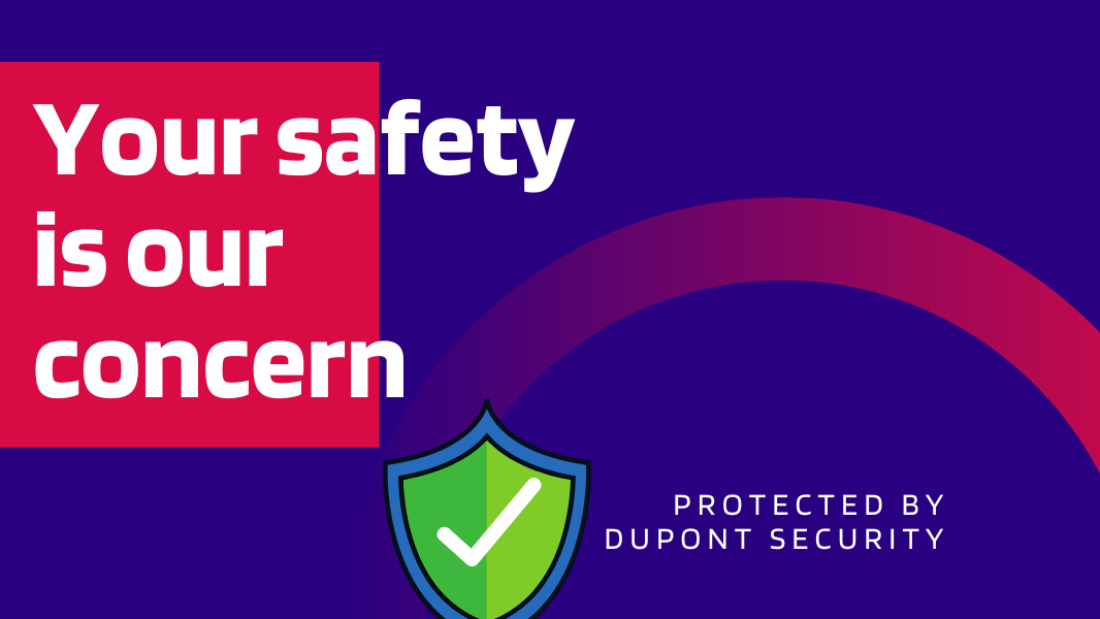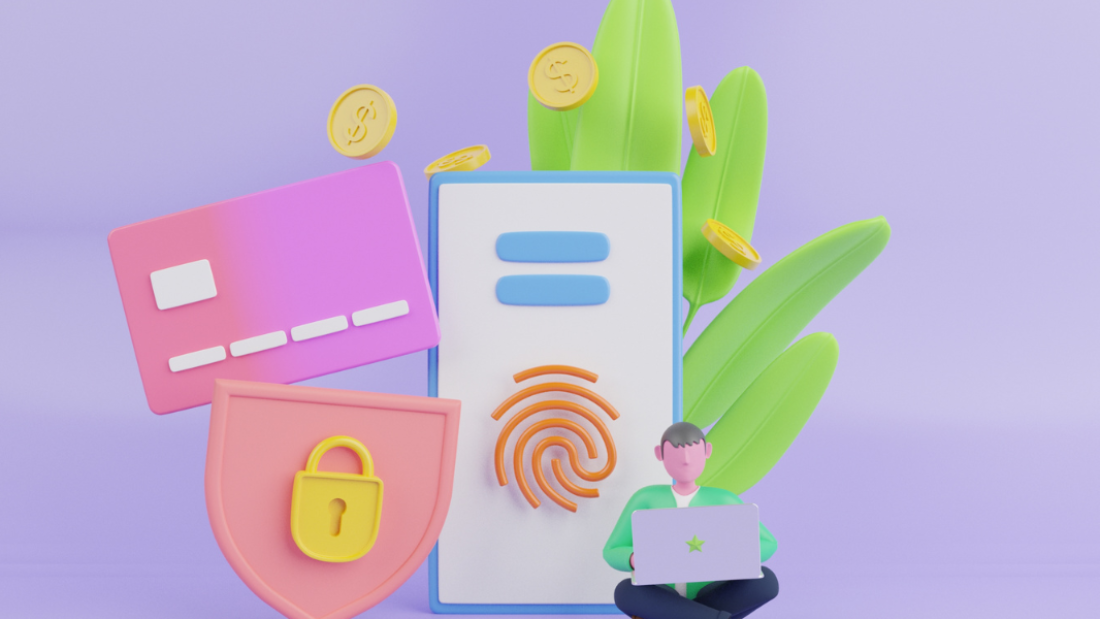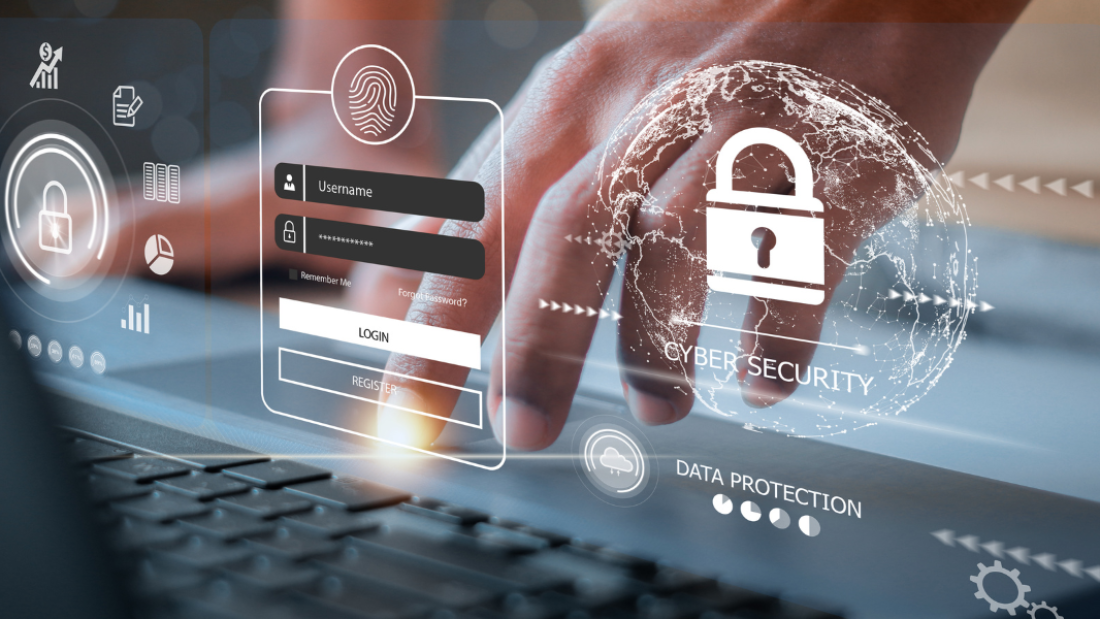Did you know that over 155 million records were exposed in data breaches in the first quarter of 2021 alone? The importance of securing your identity online has never been more critical. In a digital world where cyber threats loom large, safeguarding your personal information is paramount to protect yourself from potential risks.
Ensuring a secure identity is not just about preventing financial loss but also about safeguarding your privacy and maintaining control over your digital footprint. From strong passwords to multi-factor authentication, there are various strategies to fortify your online identity. Join us as we delve into the world of secure identity management and explore practical tips to keep your information safe and secure in an increasingly interconnected digital landscape.
Understanding Secure Identity Vision
Framework Overview
Secure identity vision refers to a comprehensive framework designed to manage digital identities effectively. It encompasses an identity security approach that ensures the protection and control of identities within an organization’s ecosystem. By implementing robust identity security systems, businesses can safeguard sensitive information and prevent unauthorized access.
Enhancing Trust and Integrity
A good identity security solution plays a pivotal role in enhancing user trust and organizational integrity. Through identity management solutions, companies can streamline access controls, authenticate users securely, and maintain compliance with regulatory requirements. This fosters a sense of trust among users and stakeholders, leading to stronger relationships and improved reputation.
Pros:
Enhanced user trust
Improved organizational integrity
Strengthened relationships with stakeholders
Cons:
Initial implementation costs
Training requirements for employees
Integration with Security Protocols
Secure identity vision seamlessly integrates with existing security protocols and technologies to fortify overall cybersecurity measures. By leveraging modern identity management practices and identity infrastructures, organizations can establish a robust defense mechanism against cyber threats. This integration ensures that true enterprise identity security is maintained across all digital touchpoints.
Implementing multi-factor authentication
Regularly updating security policies
Conducting thorough identity checks for all users
Role in Data Protection
A comprehensive identity security approach not only safeguards identities but also contributes to data protection efforts. By utilizing unified identity security platforms, businesses can monitor and manage access rights effectively, reducing the risk of data breaches. This proactive approach to identity protection aligns with industry best practices and regulatory standards, ensuring compliance and mitigating potential risks.
Key Information:
Unified identity security platforms enhance data protection.
Proactive identity management reduces the risk of data breaches.
Importance of Enhanced Access Control
Robust Access
Access management capabilities play a crucial role in safeguarding sensitive data. Organizations rely on access security to protect valuable information from unauthorized individuals. By implementing access management systems control, companies can ensure that only authorized personnel have the necessary permissions to access specific data.
Enhanced access control goes beyond basic access management by providing advanced security measures to prevent data breaches. It involves setting up strict protocols and authentication processes to verify users’ identities before granting them access to confidential information. This proactive approach significantly reduces the risk of unauthorized access attempts.
Regulatory Compliance
Effective access control is essential for maintaining regulatory compliance and mitigating risks associated with data breaches. Companies must adhere to industry-specific regulations and standards to protect sensitive data and avoid legal consequences. Secure access ensures that organizations meet the requirements outlined in regulations such as GDPR, HIPAA, and PCI DSS.
Common Security Threats in Corporations
Phishing Attacks
Phishing attacks remain a significant threat to corporations, with cybercriminals using deceptive emails or messages to trick employees into revealing sensitive information. These attacks can lead to unauthorized access to company data and systems.
Phishing attacks are often disguised as legitimate communications from trusted sources, making them hard to detect. Once an employee falls victim to a phishing attack, the repercussions can be severe, including data breaches, financial losses, and damage to the company’s reputation.
Insider Threats
Insider threats pose a serious risk to corporate security, as employees with access to sensitive information may intentionally or unintentionally compromise data security. These threats can result from disgruntled employees, negligent behavior, or inadequate access controls.
Insider threats are challenging to mitigate due to the trusted status of the individuals involved. Organizations must implement robust monitoring mechanisms and access restrictions to prevent insider threats from causing data breaches or leaks.
Malware Attacks
Malware attacks continue to evolve, posing constant challenges to enterprise security teams. Malicious software such as ransomware, viruses, and trojans can infiltrate corporate networks, leading to data encryption, system disruptions, and financial losses.
Malware attacks often exploit vulnerabilities in software or rely on unsuspecting employees clicking on infected links or attachments. The impact of a successful malware attack can be catastrophic, resulting in downtime, data loss, and compromised customer trust.
Consequences on Corporate Data and Reputation
Security threats like phishing, insider threats, and malware attacks can have devastating consequences on corporate data and reputation. Data breaches expose sensitive information, leading to legal repercussions, financial penalties, and loss of customer trust.
A compromised reputation due to security incidents can tarnish a company’s brand image and credibility in the market. Restoring trust after a security breach requires significant effort and resources, impacting long-term business sustainability.
Evolving Nature of Security Threats
The landscape of security threats is constantly evolving, demanding organizations to adopt adaptive strategies to protect their digital assets effectively. Cybercriminals are becoming more sophisticated in their tactics, requiring proactive measures and continuous monitoring.
To combat the evolving nature of security threats, organizations need to invest in advanced cybersecurity technologies, regular training for employees, and stringent security policies. Proactive threat intelligence gathering and incident response planning are essential components of a robust security posture.
Limitations of Traditional Access Control
Static Nature
Traditional access control methods, relying on conventional identity management tools, often fall short due to their static and unyielding nature. These systems struggle to adapt to the dynamic requirements of modern organizations. As a result, they may not adequately address the evolving security landscape.
User Permission Management Challenges
In large organizations, managing user permissions using these outdated methods can be a daunting task. The complexity of assigning and revoking privileges across numerous users and systems leads to inefficiencies and potential security gaps. This lack of agility hampers the organization’s ability to respond promptly to access-related issues.
Lack of Real-time Monitoring
One significant drawback of traditional access control systems is the absence of real-time monitoring and response capabilities. Without continuous oversight, organizations face increased vulnerability to unauthorized access attempts and potential data breaches. The inability to promptly detect and address suspicious activities compromises the overall security posture.
Limited Flexibility
Authentication, authorization, and entitlements in conventional systems are often rigid and predefined, limiting the organization’s ability to tailor access controls according to specific needs. This lack of flexibility can lead to over-permissioning or under-permissioning, exposing critical data to unnecessary risks or impeding operational efficiency.
Inadequate Compliance Measures
Another critical aspect where traditional access control methods fall short is in ensuring compliance with regulatory requirements. These systems may lack the necessary features to facilitate audit trails, enforce segregation of duties, or demonstrate adherence to industry standards. As a result, organizations using such systems may face challenges in meeting regulatory obligations.
Pros and Cons:
Pros:
Established protocols and familiarity for users.
Simple implementation in small-scale environments.
Cons:
Limited adaptability to changing security needs.
Inefficient user permission management in large organizations.
Key Features of Secure Identity Vision
Multi-Factor Authentication
Multi-factor authentication is a crucial feature of secure identity vision, requiring users to provide two or more verification factors to access an account. This significantly enhances security by adding layers of protection beyond just passwords.
Implementing multi-factor authentication helps in mitigating the risks associated with unauthorized access and data breaches. By combining something the user knows (like a password) with something they have (such as a fingerprint), it ensures a more robust defense against cyber threats.
Biometric Verification
Biometric verification is another key feature that enhances secure identity vision by using unique physical characteristics like fingerprints, facial recognition, or iris scans for user authentication. This advanced technology offers a high level of security and accuracy compared to traditional password-based systems.
The use of biometric verification not only provides a more secure method of identity authentication but also offers a convenient and user-friendly experience. It eliminates the need for users to remember complex passwords and reduces the risk of identity theft through stolen credentials.
User Behavior Analytics
User behavior analytics plays a vital role in identifying anomalies within the system by analyzing patterns of user activities and detecting any deviations from normal behavior. This proactive approach helps in detecting potential security threats and unauthorized access attempts before they escalate into major breaches.
By monitoring user behavior in real-time, organizations can quickly identify suspicious activities such as unusual login times or locations, abnormal data access patterns, or unauthorized privilege escalation. This enables timely intervention to prevent security incidents and safeguard sensitive information.
Centralized Identity Management
Centralized identity management streamlines access processes by consolidating user identities, roles, and permissions into a centralized system. This approach simplifies user provisioning, deprovisioning, and access control across various applications and systems within an organization.
Centralized identity management enhances operational efficiency by providing a single source of truth for managing user identities and access rights. It ensures consistent enforcement of security policies, reduces administrative overhead, and improves compliance with regulatory requirements.
Benefits for Corporate Access Control
Enhanced Operational Efficiency
Secure identity vision significantly enhances operational efficiency by streamlining access control processes within corporate environments. By implementing robust authentication mechanisms, organizations can ensure that only authorized personnel have access to sensitive data and resources. This streamlined access control system reduces the time spent on manual verification processes, allowing employees to focus on their core tasks. automated access control systems minimize the risk of human errors, further boosting operational efficiency.
Reduced Security Breaches and Costs
One of the key benefits of secure identity vision for corporate access control is the reduction of security breaches and associated costs. By implementing multi-factor authentication and biometric identification methods, organizations can significantly enhance their security posture. This proactive approach helps prevent unauthorized access attempts and mitigates the risk of data breaches. As a result, companies can avoid costly repercussions such as regulatory fines, legal fees, and reputational damage caused by security incidents.
Seamless User Experiences
Secure identity solutions enable organizations to provide seamless user experiences without compromising security measures. By implementing user-friendly authentication methods such as biometrics or single sign-on capabilities, companies can strike a balance between convenience and security. Employees can securely access corporate systems and applications with minimal friction, enhancing their overall user experience. This seamless authentication process not only improves employee satisfaction but also boosts productivity by eliminating barriers to accessing essential resources.
Real-World Examples and Case Studies
Successful Implementation
Implementing secure identity solutions can significantly enhance data protection. For instance, Company X successfully integrated biometric authentication tools into their systems. This resulted in a 60% decrease in unauthorized access attempts.
The introduction of secure identity applications in healthcare facilities has revolutionized patient data security. Hospital Y adopted multi-factor authentication for staff access. Consequently, data breaches reduced by 80% within six months of implementation.
Measurable Outcomes
In the banking sector, the adoption of enhanced access control measures has led to substantial improvements. Bank Z implemented role-based access policies, resulting in a 40% reduction in fraudulent activities. Customer trust increased by 50%.
The manufacturing industry has witnessed remarkable outcomes post the integration of secure identity protocols. Factory A incorporated real-time monitoring tools to track employee access. As a result, instances of unauthorized entry decreased by 70% over a year.
Testimonials from Organizations
Company A, a leading tech firm, shared their experience with secure identity systems. They reported a significant drop in data breaches and an increase in overall operational efficiency by 30%. These improvements were attributed to robust identity management practices.
Enterprise B, specializing in e-commerce, emphasized the importance of secure identity solutions. By implementing stringent access controls, they experienced a 50% decrease in cyber threats and enhanced customer trust. This led to a 25% increase in sales within a quarter.
Addressing Implementation Challenges
Budget Constraints
Organizations often face challenges due to budget constraints when implementing secure identity solutions. Limited financial resources can hinder the adoption of robust IAM configurations and lead to gaps in security measures.
Resistance to Change
Resistance to change is another common obstacle encountered during the implementation of secure identity solutions. Employees may be hesitant to adapt to new IAM strategies, which can impede the overall effectiveness of the security posture.
Technical Integration Issues
Technical integration issues with existing systems pose a significant challenge during the implementation of secure identity solutions. Ensuring seamless integration with legacy systems while maintaining security standards requires careful planning and execution.
Importance of Training Programs
Training and awareness programs are crucial for overcoming implementation challenges related to secure identity solutions. Educating staff about the importance of IAM capabilities and best practices enhances their understanding and engagement in maintaining a secure environment.
Staff Engagement
Engaging staff through training programs fosters a culture of security awareness within the organization. By empowering employees with the knowledge to identify and address IAM configuration oversights, organizations can significantly reduce their attack surface and enhance compliance with regulations.
Future Trends in Access Control
Rise of AI
Artificial Intelligence (AI) and machine learning are revolutionizing access control by automating decision-making processes. These technologies analyze user behaviors and patterns to detect anomalies, enhancing security measures.
AI-driven systems can swiftly adapt to evolving threats, providing real-time responses to potential security breaches. By continuously learning from data, AI strengthens access management strategies, making them more proactive and efficient.
Decentralized Identity Solutions
The rise of decentralized identity solutions holds great potential in bolstering data privacy within access control systems. By eliminating the need for centralized authorities to verify identities, users gain more control over their personal information.
Decentralized platforms leverage blockchain technology to securely authenticate users without relying on traditional passwords. This approach enhances privacy by minimizing the risks associated with centralized databases vulnerable to cyberattacks.
Regulatory Frameworks
Regulatory frameworks play a pivotal role in shaping access control practices, emphasizing the importance of compliance with data protection laws. Organizations are increasingly adopting modern Identity and Access Management (IAM) technologies to adhere to stringent regulations.
Data privacy regulations like GDPR and CCPA mandate strict controls over user information, driving the adoption of advanced access management solutions. Compliance with these frameworks ensures that organizations safeguard sensitive data and maintain the trust of their customers.
Summary
Your understanding of secure identity vision, the importance of enhanced access control, common security threats in corporations, limitations of traditional access control, key features of secure identity vision, benefits for corporate access control, real-world examples and case studies, addressing implementation challenges, and future trends in access control is now comprehensive. By delving into these topics, you have gained insights into the evolving landscape of access control systems within corporate environments.
Incorporating secure identity solutions can significantly enhance your organization’s security posture, streamline operations, and mitigate risks associated with unauthorized access. As you navigate the realm of access control, remember to stay informed about emerging technologies and best practices to fortify your defenses against potential threats. Embracing a proactive approach to secure identity management will not only safeguard your assets but also foster a culture of resilience and innovation within your company.
Frequently Asked Questions
What is the significance of implementing Secure Identity Vision in corporations?
Secure Identity Vision enhances access control, mitigates security threats, and improves overall corporate security posture. By integrating advanced authentication methods and identity management, organizations can ensure secure data access and protect sensitive information effectively.
How does Secure Identity Vision address common security threats in corporations?
Secure Identity Vision combats threats like unauthorized access, data breaches, and insider attacks by implementing multi-factor authentication, biometric verification, and continuous monitoring. This proactive approach strengthens security layers and reduces vulnerabilities within corporate networks.
What are the key features of Secure Identity Vision for enhancing access control?
Key features include biometric authentication, role-based access control, real-time monitoring, centralized identity management, and adaptive security policies. These features collectively bolster security measures, streamline user access, and fortify defenses against evolving cyber threats.
Can you provide examples of real-world applications showcasing the benefits of Secure Identity Vision?
Companies like XYZ Corp saw a 30% reduction in security incidents after deploying Secure Identity Vision. By enforcing strict access controls and leveraging biometric authentication, they achieved enhanced data protection and minimized unauthorized access attempts across their network.
What are the future trends in access control that organizations should consider regarding Secure Identity Vision?
Future trends include AI-driven threat detection, blockchain-based identity verification, IoT integration for access management, and zero-trust security models. Embracing these advancements alongside Secure Identity Vision will empower organizations to stay ahead of emerging threats and ensure robust data protection measures.









